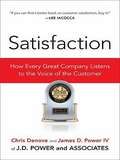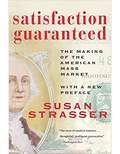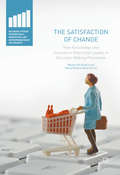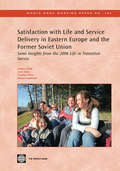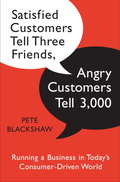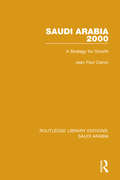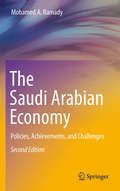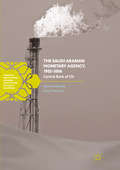- Table View
- List View
Satera Team at Imatron Systems, Inc. (A)
by Teresa M. Amabile Elizabeth A. SchatzelEscalating conflict has erupted within the Satera product development team, resulting from the conflicting cognitive styles of the two senior mechanical engineers. The conflict has taken a toll on both project progress and team morale, endangering one of the most important initiatives at Imatron Systems, Inc. After discussing the situation with VP of R&D Rick Levinger, team leader Gary Pinto realizes he must take decisive action. This case presents a profile of the company, the team, the Satera project, and the team members, focusing on Pinto and the dueling engineers. Through a detailed description of their vastly different problem-solving preferences, and the interactions in which those differences become most apparent, the conflict presents a common problem that managers must face when working with creative people on creative projects.
Satisfaction
by Chris Denove James D. Power IVThe ultimate guide to customer satisfaction, from the people who understand it better than anyone For nearly forty years, J. D. Power and Associates has been synonymous with measuring customer satisfaction and helping businesses understand what customers really want. Now two of the company?s senior executives, Chris Denove and James D. Power IV, unlock the vault on decades of closely guarded research data?and insights previously available only to the firm?s clients. This is the first book that really explains how great companies like Lexus, UPS, JetBlue, and Enterprise Rent-A-Car get it right, delivering consistently high customer satisfaction and translating it into profitable growth. It will teach you, for instance, how to: ? Understand the financial link between satisfaction and profits ? Turn customers who are simply ?satisfied? into vocal advocates ? Empower frontline employees to do the right thing ? Use problem resolution as an opportunity to make new fans Satisfaction offers advice for companies large or small, for product manufacturers, service providers, and retailers alike. It delivers not just a stockpile of customer research, but a road map to developing specific policies and processes. It also tells fascinating stories of companies that don?t just talk the talk, but walk the walk every day?and of other companies that ignored the voice of the customer, with dire consequences. .
Satisfaction: A Behavioral Perspective on the Consumer
by Richard L. OliverDesigned for advanced MBA and doctoral courses in Consumer Behavior and Customer Satisfaction, this is the definitive text on the meaning, causes, and consequences of customer satisfaction. It covers every psychological aspect of satisfaction formation, and the contents are applicable to all consumables - product or service.Author Richard L. Oliver traces the history of consumer satisfaction from its earliest roots, and brings together the very latest thinking on the consequences of satisfying (or not satisfying) a firm's customers. He describes today's best practices in business, and broadens the determinants of satisfaction to include needs, quality, fairness, and regret ('what might have been').The book culminates in Oliver's detailed model of consumption processing and his satisfaction measurement scale. The text concludes with a section on the long-term effects of satisfaction, and why an understanding of satisfaction psychology is vitally important to top management.
Satisfaction Guaranteed: How Zingerman's Built a Corner Deli into a Global Food Community
by Micheline MaynardFrom an accomplished national journalist, a lively look at the inception, growth, future, and unique management style of Zingerman&’s—a beloved, $70 million-dollar Michigan-based specialty food store with global reach.Certain businesses are legendary, exerting immense influence in their field. Zingerman&’s in Ann Arbor, Michigan, is one of those places. Over the years the flagship deli has expanded into a community of more than a dozen businesses, including a wildly successful mail order operation, restaurants, bakery, coffee roastery, creamery, candy maker, and events space—transforming Ann Arbor into a destination for food lovers. Founded in 1982 by Paul Saginaw and Ari Weinzweig, Zingerman&’s philosophy of good food, excellent service, and sound finances has turned it into a company whose reach spans all corners of the gourmet food world. Famous for its generous deli sandwiches, fresh bread, and flavorful coffee—all locally produced—Zingerman&’s is also widely celebrated for its superb customer service and employee equity. The culture is one of respect and innovation, while maintaining very high standards. Every employee has access to the financial records, everyone has a voice, and everyone is heard. It has legions of enthusiastic customers, fans across the food world, and business principles and a work ethic that have been admired, analyzed, and copied. All that is revealed here, in Micheline Maynard&’s Satisfaction Guaranteed. Readers will discover how by 2019, Zingerman&’s employed hundreds of employees and achieved close to $70 million in annual sales. When the pandemic struck, Zingerman&’s growth momentarily screeched to a halt—but it survived by reinventing itself, while still serving its beloved food and selling its wide array of groceries. Now, as Zingerman&’s approaches its 40th anniversary, it is on track for stronger results than ever. A recipe for success in business and in life, Satisfaction Guaranteed provides a roadmap for manifesting joy and purpose in business.
Satisfaction Guaranteed: The Making Of The American Mass Market
by Susan StrasserThis sweeping history provides the reader with a better understanding of America’s consumer society, obsession with shopping, and devotion to brands. Focusing on the advertising campaigns of Coca-Cola, Kellogg’s, Wrigley’s, Gillette, and Kodak, Strasser shows how companies created both national brands and national markets. These new brands eventually displaced generic manufacturers and created a new desire for brand-name goods. The book also details the rise and development of department stores such as Macy’s, grocery store chains such as A&P and Piggly Wiggly, and mail-order companies like Sears Roebuck and Montgomery Ward.
The Satisfaction of Change
by Manlio Del Giudice Maria Rosaria Della PerutaThis book analyzes the impact of the digital economy on customer satisfaction, shopping experience, resistance to change, script theory, and loyalty. The model introduced assumes that online markets have led to a redefinition of the concepts of loyalty and shopping scripts as a way to reduce customers' cognitive effort, by optimizing purchase time and increasing the speed and satisfaction of the shopping experience. It describes the utility function of the script by retaining customer loyalty and making the customer more reluctant to abandon his regular supplier. It also explores the difficulty faced by the higher churn rate on the Internet and the minimization of search costs, by integrating more functionality to achieve the ultimate goal of behavioral and cognitive loyalty. The authors provide an analysis in a "digital" view of the economic theory of switching costs and the resulting lock-in mechanisms which, in a classical economy, are often a barrier to disloyalty. It is a useful and effective tool for online businesses, their main managerial and strategic implications, and the adaptability to existing contexts.
Satisfaction with Life and Service Delivery in Eastern Europe and the Former Soviet Union
by Pradeep K. Mitra Salman Zaidi Asad Alam Ramya SundaramThe past two decades in Eastern Europe and the former Soviet Union have been times of tremendous change, with countries undergoing rapid transformation from centrally-planned to market-oriented economies. While poverty increased during the initial years of transition, primarily on account of the sharp economic contraction, the resurgence of economic growth in the region since 1998 has resulted in a rebound in household incomes and living standards. Data from the 2006 Life in Transition Survey (LiTS)-a joint initiative of the European Bank for Reconstruction and Development and the World Bank-provides a unique opportunity to investigate the extent to which citizens of ECA countries are satisfied with their lives and with the performances of their governments, and to study key factors influencing their outlook in a systematic way across all countries of the region. The main objective of the LiTS was to assess the impact of transition on people, covering four main themes. First, it collected personal information on aspects of material well-being, including household expenditures, possession of consumer goods such as a car or mobile phone, and access to local public services and utilities. Second, the survey included measures of satisfaction and attitudes towards economic and political reforms as well as public service delivery. Third, the LiTS captured individual 'histories'-key events and episodes that may have influenced their attitudes towards reforms, and information on family background, employment, and coping strategies. Finally, the survey also attempted to capture the extent to which crime and corruption are affecting peoples' lives, and the extent to which individuals' trust in other people and in state institutions has changed over time.
Satisfied Customers Tell Three Friends, Angry Customers Tell 3,000
by Pete BlackshawIn todays Internet-driven world, customers have more power than ever. Through what interactive marketing expert Pete Blackshaw calls "consumer-generated media"blogs, social networking pages, message boards, product review siteseven a single disgruntled customer can broadcast his complaints to an audience of millions. Blackshaw shows managers, marketers, and business leaders how to establish and maintain credibility for their brand by being authentic, listening and responding to customers, and forming relationships built on openness, transparency, and trust. Filled with stories based on his experience working with Fortune 500 brands such as Toyota, Dell, Nike, Sony, General Motors, Hershey, Unilever, Nestl, Lexus, and Bank of America, Blackshaw offers a clear strategy to sustain a competitive advantage by creating enduring, loyal relationships with todays consumer.
Satrix: Competing in the Passive Asset Management Industry in South Africa
by Dilyana Karadzhova Botha Mark Egan Pippa Tubman ArmerdingIn late 2017, Satrix, one of the largest passive asset management firms in South Africa and a pioneer in the industry since 2000, had to decide its strategy going forward in a market where passive asset management had become increasingly commoditized and competitive. Over the previous three years, as a result of increased competition and changing investor expectations, Satrix had faced increased pressure to reduce its management fees. The total expense ratio (TER) of the Satrix 40, Satrix's flagship ETF, was 38 basis points (bps), more than double that of many of its new competitors. To maintain the company's position in the industry, Satrix's leaderhip was considering cutting the TER on its flagship ETF by almost 75% from 38 bps to 10 bps. The fee change would dramatically lower Satrix's margins, but the company's leadership was concerned that Satrix couldn't afford to not make the change; nearly 10% of assets the company managed came from the Satrix 40. What should they do?
Saturn: A Different Kind of Car Company
by Anita M. Mcgahan Greg KellerSaturn was General Motors' (GM) response to Japanese companies' dominance of the small car market during the mid-1980s. In the three-and-a-half years since its first sedan rolled off the assembly line, the Saturn Corp. had accumulated an impressive list of achievements. In April, 1994 Saturn's top management team met with GM's leadership to discuss the subsidiary's business plan. As Saturn's president reflected on the company's future and on his experience at GM, he felt confident that the executive committee would approve expansion if the Saturn team showed that it had achieved a sustainable position. Illustrates strategic analysis of sustainable competitive advantage.
Saturn Corp.'s Module II Decision
by Anita M. Mcgahan Greg KellerIn the Spring of 1994, Saturn Corp. was setting sales records by attracting more than 25,000 buyers per month. Saturn officials believed there was a long-term opportunity to sell 400,000 to 500,000 cars per year in the United States and selected international markets. Saturn managers had been reviewing options for a second assembly plant (known as "Module II") with General Motors (GM) since the beginning of the year. One possibility was to expand capacity at Saturn's existing production facility in Spring Hill, Tennessee. A second set of options involved refitting one of several plants that had been mothballed or was scheduled to close shortly.
Saudi Arabia: A Case Study in Development (Routledge Library Editions: The Oil Industry #9)
by Fouad Al-FarsySaudi Arabia (1986) is a major study of the political and administrative development of Saudi Arabia following its establishment as a leading world exporter of oil. It looks at the status of oil in the development of the state, as well as the political systems of government in the Kingdom.
Saudi Arabia: Getting the House in Order
by Rebecca Evans Richard H.K. VietorProvides a vehicle to explore Islamic development and political issues within BGIE (business, government, and international economy). Set in early 2002, the case focuses on Crown Prince Abdullah's efforts to liberalize a failing rentier state, that had been dependent on petroleum for too long. His efforts to liberalize, however, come at a politically and socially sensitive time--just after September 11, 2001, and in the midst of the Palestinian intifada. In a desperate effort to maintain oil prices, OPEC has recently reduced output by 1.5 million barrels daily, with Saudi Arabia bearing the largest cut.
Saudi Arabia: A Brief Background
by Kristin E. Fabbe Safwan Al-Amin Esel Cekin Natalie KindredIndustry and Background Note
Saudi Arabia: Modern Reform, Enduring Stability
by Nicole Forrest Richard H.K. VietorThis case, along with Dubai: Global Economy (709-043) provides an opportunity to discuss Saudi Arabia's efforts to modernize, without really Westernizing, in sharp contrast to Dubai, a nearby Arab Emirate. As Saudi Arabia's development strategy unfolds in the past six years, it is contrasted to social and political pressures within the country, volatility in global oil markets and severe political problems in the Middle East.
Saudi Arabia: Vision 2030
by Richard H.K. Vietor Haviland Sheldahl-Thomason"At an investor summit in late October 2017, Crown Prince Mohammed bin Salman pledged to “moderate” Saudi Arabia. “We will not spend the next 30 years of our lives dealing with extremist ideologies. We will destroy them today, and immediately,” said the Prince. “Saudi was not like this before 1979. Saudi Arabia and the entire region went through a revival after 1979…All we are doing is going back to what we were: a moderate Islam that is open to all religions and to the world and to all traditions and people.” <P> The summit was celebrating more than a year’s progress of Vision 2030 – the development strategy that the young Prince had introduced in June of 2016. In an environment of sharply declining oil prices, the 32-year-old Prince – not yet designated Crown Prince – had introduced a plan to move Saudi Arabia away from its long-dependence on oil exports, to become an investment powerhouse, to develop the non-oil economy and, in the process, create six million jobs for Saudi’s."
Saudi Arabia: Finding Stability after the Arab Spring
by Richard H.K. Vietor Hilary WhiteIn 2015, King Salman of Saudi Arabia was juggling several balls as the kingdom's new monarch. At home, there were pressures for liberalization, from women and youth, and pressures for more conservative religious observance and policy from the Muslim "ulema." His domestic economic policy, which entailed diversification, infrastructure construction, education and a move towards a "knowledge economy," remained difficult to implement because of oil's immense role in the GDP, trade, and the budget. Internationally, Saudi Arabia's Middle East region was a mess; troubles as always with Israel and Palestine, but also with Syria, Egypt, Iraq, and Iran. In all of this, a central question loomed: could Saudi Arabia modernize without westernizing?
Saudi Arabia 2000: A Strategy for Growth (Routledge Library Editions: Saudi Arabia Ser. #4)
by Jean CleronThe sharp increase in both the price of crude oil and resulting revenues to Saudi Arabia has seen the rapid growth of the kingdom’s international trade and a large accumulation of financial assets. These sudden and drastic changes have taken place, however, within a mainly traditional economy, unprepared to cope with a massive increase in government revenues. Long-term planning is therefore of the utmost importance to Saudi Arabia, and this study, first published in 1978, presents a detailed analysis of the structure of the kingdom’s economy, represented by a dynamic simulation model. The first part of the book considers, among other issues, the production of crude oil, the non-oil production, the accumulation of productive capital, the Saudi population and labour force, the mechanism of domestic inflation, and the relationship of Saudi Arabia with the rest of the world. The second part then presents simulation experiments conducted upon the model, which are commented on and analysed. A concluding chapter illustrates how such a study may be extended to cover several other countries in the Middle East.
Saudi Arabia: A Brief Background
by Kristin E. Fabbe Natalie Kindred Safwan Al-AminThis note provides a brief overview of the history of Saudi Arabia as well as the economic and political context in 2018. The note is an essential supplement to the case "Almarai Company: Milk and Modernization in the Kingdom of Saudi Arabia," HBS No. 719-020, but is also appropriate for other relevant cases.
Saudi Arabia - Culture Smart!
by Nicolas BucheleCulture Smart! provides essential information on attitudes, beliefs and behavior in different countries, ensuring that you arrive at your destination aware of basic manners, common courtesies, and sensitive issues. These concise guides tell you what to expect, how to behave, and how to establish a rapport with your hosts. This inside knowledge will enable you to steer clear of embarrassing gaffes and mistakes, feel confident in unfamiliar situations, and develop trust, friendships, and successful business relationships.Culture Smart! offers illuminating insights into the culture and society of a particular country. It will help you to turn your visit-whether on business or for pleasure-into a memorable and enriching experience. Contents include* customs, values, and traditions* historical, religious, and political background* life at home* leisure, social, and cultural life* eating and drinking* dos, don'ts, and taboos* business practices* communication, spoken and unspoken"Culture Smart has come to the rescue of hapless travellers." Sunday Times Travel"... the perfect introduction to the weird, wonderful and downright odd quirks and customs of various countries." Global Travel"...full of fascinating-as well as common-sense-tips to help you avoid embarrassing faux pas." Observer"...as useful as they are entertaining." Easyjet Magazine"...offer glimpses into the psyche of a faraway world." New York Times
Saudi Arabia in Transition
by Bernard Haykel Thomas Hegghammer Stéphane Lacroix Bernard Haykel Thomas HegghammerMaking sense of Saudi Arabia is crucially important today. The kingdom's western province contains the heart of Islam, its two holiest mosques in Mecca and Medina, and it is the United States' closest Arab ally and the largest producer of oil in the world. However, the country is undergoing rapid change: its aged leadership is ceding power to a new generation, and its society, which is dominated by young people, is restive. Saudi Arabia has long remained closed to foreign scholars, with a select few academics allowed into the kingdom over the past decade. This book presents the fruits of their research as well as those of the most prominent Saudi academics in the field. The fifteen chapters in this volume focus on different sectors of Saudi society and examine how the changes of the past few decades have affected each. Many of the authors have conducted archival and fieldwork research in Saudi Arabia, benefitting from the recent opening of the country to foreign researchers. As such, the volume reflects new insights and provides the most up-to-date research on the country's social, cultural, economic and political dynamics.
Saudi Arabia: Vision 2030
by Richard H.K. Vietor Haviland Sheldahl-ThomasonSaudi Arabia's King Salman faces several challenges, both domestic and foreign. Domestically, he need to build the country's economy to accommodate a "youth bulge" while balancing between liberals and conservatives. And he needs to diversify the economy away from its reliance on oil. Internationally, he must cope with the Arab Spring, with war in Syria and Yemen as well as the threats from Iran and ISIS and continuing friction between Palestinians and Israelis. The key to these issues is Vision 2030 - the plan his son, the Crown Prince, has introduced and begun implementing.
The Saudi Arabian Economy
by Mohamed A. RamadyThe Saudi Arabian economy has changed almost beyond recognition since the oil boom days of the 1980s, and the Kingdom itself has changed too economically, socially, and demographically. In the second edition of The Saudi Arabian Economy, Mohamed Ramady uses several overlapping themes to establish and develop a framework for studying the fundamental challenges to the Saudi economy. Particular attention is paid to the benefits of short-term planning and long-term diversification intended to shield the economy from potentially de-stabilizing oil price fluctuations and the pace and diversity of domestic reforms. The author examines the core strengths and evolution of various financial institutions and the Saudi stock market in the face of globalization, before analyzing the private sector in detail. Topics discussed include: * The hydrocarbon and minerals sector, including the emergence of the competitive petrochemical sector * The impact of small and medium sized businesses and the evolving role of "family" businesses * The growing role of women in the Saudi economy * The role of privatization and FDI as engines of change and the position of public-private-partnerships * The establishment of a foundation for a knowledge-based economy Finally, the author offers an analysis of the key challenges facing the Saudi economy, paying particular attention to the potential costs and benefits of globalization, and membership in the WTO. Employment, education, economic and social stability, and Saudi Arabia's place in the Gulf Cooperation Council, as well as Saudi Arabia's evolving strategic economic relations with China and other countries are offered as keys to the consensus building needed to ensure the Kingdom's healthy economic future.
The Saudi Arabian Monetary Agency, 1952-2016
by Ahmed Banafe Rory MacleodThis book sheds new light on the critical importance of the Saudi Arabian Monetary Agency (SAMA), a remarkably successful central bank that is a model for developing oil exporters worldwide. As a "swing producer", Saudi Arabia has traditionally stepped in to make up for oil supply shortfalls in other OPEC countries, or to scale back their own production when overabundance might lead to a price crash. Since 2014, Saudi Arabia has changed its policy in response to the rise of American shale oil, in search of a long-term strategy that will, once again, help balance supply and demand at a steady price. In its informal dual role of central bank and sovereign wealth fund, SAMA must navigate the paradoxes faced by monoline oil producing countries: the need for diversification vs. dependence on oil-based revenue; the loss of foreign exchange reserves that follows oil-financed government spending; the unreliability of revenue from oil; the challenges of using a Western model for supervising Shariah-compliant banks; and the need to have a balancing mix of oil and financial assets. As SAMA (now the Saudi Arabian Monetary Authority) reassesses its role in 2017, this history and guide to current policy issues will prove invaluable for policymakers in oil producing economies looking to apply lessons from the past as they plan for the future.
Saudi Aramco and Corporate Venture Capital
by Nathaniel Burbank Joseph Fuller Matthew Rhodes-KropfSaudi Aramco launched an internal venture capital arm in 2011, which promptly became the world's largest investor in energy related startups. In choosing to proceed, the company's New Business Development unit (NPD) wrestled with a number of challenges. How should the fund be structured, as a fully independent, venture capital partnership or as a business unit? How should it be governed, and how should the investment committee function? Could mechanisms be developed that ensured the expertise of Saudi Aramco's famously conservative engineering resources could be harnessed in the investment process and its business units enlisted to work with portfolio companies? How could the fund be structured to reflect Saudi Aramco's role in modernizing the economy of Saudi Arabia? The case provides a vehicle for discussing the basics of corporate venture capital and the challenges large corporations face in participating in the world of startups. It also describes how certain industries, like energy, are poorly suited to the investment profile of traditional venture capitalists. The product development cycle is too long and the capital required to develop and test products too great for ordinary, general partnerships to sustain. The case also introduces interesting themes in the role of parastatals in contributing to national economic competitiveness.

